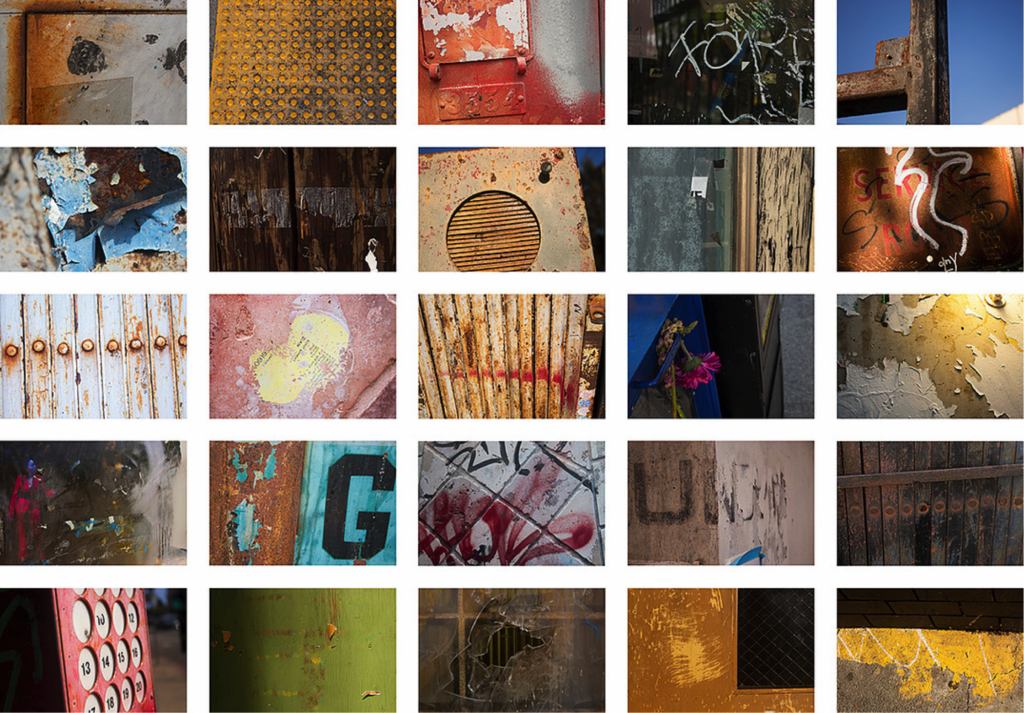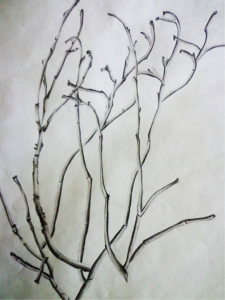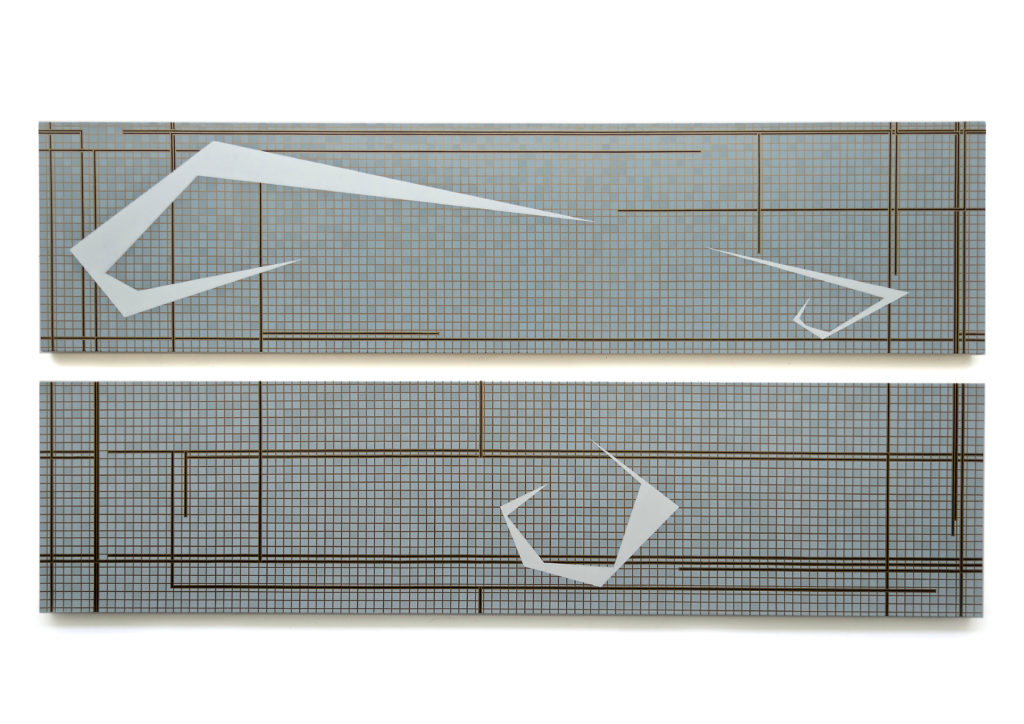Students working in the revamped fourth and fifth floors of Moffitt Library will find fresh inspiration in the original artwork adorning the walls. Some of the artists will be on hand at the Nov. 2 opening to talk with attendees about their work.
The redesigned floors also boast modern, appealing workspaces; ample natural light; up-to-date technology; flexible seating; and access to vast Library collections both online and in the nearby Gardner Stacks.
UC Berkeley student artists were tapped to supply the half a dozen paintings, drawings, photos and mixed media works. Farley Gwazda, Worth Ryder gallery manager in the Department of Art Practice, assisted in launching the process.
Monica Galvan is a 2016 graduate whose piece “What’s Left Behind in Berkeley” assembles 25 photos chosen from over 1500 that she took on long walks down Shattuck and University Avenues. Rusty sign poles, battered metal grates and peeling paint are among the richly-textured images.

Galvan spent many hours in Moffitt as a student herself, and hopes that library users will get a “creative kickstart” from her work. “Many of my photos are taken low to the ground, of things that are usually overlooked, so I’m hoping the piece will inspire viewers to take the time to look at things from a fresh angle.”
Lindsay Hansen (’16) contributed “A Field Guide to the San Francisco Bay Area,” which depicts dozens of frogs and fishes, birds, butterflies and other regional fauna.

Hansen earned a BA in art together with a BS in conservation resource studies, and has worked as a field biologist and scientific illustrator. She comments that her “species account work intends to inspire excitement and wonderment for biology, science and connections with nature.”
More minimalistic is a delicate drawing of bare tree branches by Katie Revilla (’17). Although Revilla works mainly in sculpture and textiles, she says “drawing is the foundation. I draw everything first, to think it through.”

Her piece conveys the poignancy of “how winter breaks everything down to its elements and exposes its vulnerability; and yet, nature survives and bursts into life again in the spring.”
Abstract diptychs by Bridget Cuevas (’16) are also on display. Cuevas notes that she is honored to have her work on display in Moffitt, saying “It is a privilege to think that someone may stop and stare at my work in such a space.” She adds that among the inspirations for her work are “clean sheets, domesticity, and architecture.” Cuevas is applying to graduate school in art for next year.

The student artworks in Moffitt will be displayed through May 2017, at which time new student pieces will be selected and displayed.
Local art collective creates two works
Two 8-by-6 foot mixed media murals adorn a wall on the Haas-Herscher Gallery on the fifth floor. commissioned from Oakland collective Five Ton Crane. Two UC Berkeley alumni, Sean Orlando (’11) and Bree Hylkema (’97) serve as the collective’s lead artists. It has created large-scale artworks for Burning Man and for festivals and museums locally and around the country.
As a student, Orlando worked on the “Babel Library” installation in Doe Library, a piece created by then artist-in-residence J. Ignacio Diaz de Rabago which featured books suspended in the air near the three-level spiral staircase of the Gardner Stacks.
For the Moffitt Library works, photos of Sproul Plaza and the Student Organic Garden Association (SOGA) Garden were divided into 48 squares, and each square was recreated by artists in the Five Ton Crane collective. Yarn, felt, plaster, paint, puzzle pieces, beads, guitar picks, rocks and other media were used to create the squares, which were then assembled to make a coherent image. Five Ton Crane’s Oakland Squared project, that uses the same technique, is on display in the Latham Building lobby in Uptown Oakland.
Orlando was introduced to the grid concept in a charcoal drawing class at Berkeley. He comments “it’s always fun to utilize the power of a group, weaving together techniques, visions and styles.”
The final Five Ton Crane works in Moffitt include contributions from over fifty artists, each of whom made one or more squares. A number of the artists are Berkeley alumni or campus staff — including Zsuzsu Listro, who works in the University Librarian’s office and whose square incorporates an old pair of Levi jeans. Desi Gallardo, who works in human resources, also created a square, utilizing mixed media (acrylic paints, oil pastels, markers) and found objects (deconstructed floppy disks, an old DSL modem, and DSL filters).
Orlando hopes that library users viewing the works will be inspired by the power of a collective effort and the creative possibilities engendered by teamwork. Hylkema notes that “as our culture becomes more and more digital, seeing a handcrafted creation will remind people of all these traditional techniques.” She imagines people “looking up from their research or working on a paper, and having something relaxing to look at, something they can lose themselves in.”